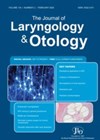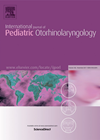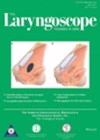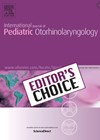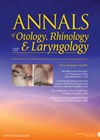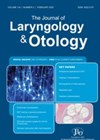
Journal Reviews
Implications of tonsillectomy in very young children
This is a comprehensive study comprising 157 children who underwent tonsillectomy below the age of two years, mainly for sleep-disordered breathing (86.6%) and recurrent tonsillitis (7%). With relatively recent understanding of OSAS, the indications for tonsillectomy in children under two...
The basis of auditory processing disorder: what can we learn from corticals?
Auditory processing disorder (APD) is a poorly understood, heterogenous and surprisingly common condition. It manifests as a perceptual difficulty in centrally processing auditory information. Diagnosis is usually based on a variety of behavioural tests involving verbal and non-verbal assessments. In...
Further understanding of GJB2 hearing loss
For many years, hearing loss has been an area which has attracted the interest of clinical and academic geneticists. Genetic testing for severe-profound hearing loss is now commonplace in many healthcare systems. Understanding the genetics of hearing loss has improved...
Which scan for children with bilateral sensorineural hearing loss? Keeping the debate going…
There have been years of debate about the appropriate imaging strategy for children with bilateral sensorineural hearing loss. For those children undergoing cochlear implant surgery, CT may provide some assistance to surgical planning, although this is not necessary in children...
The incidence of coagulopathies in children presenting with post-tonsillectomy haemorrhage
Tonsillectomy is often the first haemostatic challenge for a child. Postoperative haemorrhage may therefore represent the first presentation of a child’s underlying bleeding disorder. This study aimed to quantify the rate of occult coagulopathy in patients who had experienced a...
Can we centralise cochlear implant surgery and keep most appointments close to home?
The NHS Five Year Forward View promoted seeing patients closer to home in order to provide better care, cut down on missed appointments and reduce costs. This encouraged the development of ‘hub and spoke’ models of care, but this model...
Canal wall up mastoid defects - can they be usefully reconstructed with hydroxyapatite cranioplastic cement?
Standard canal wall up (CWU) mastoid surgery leaves a mastoid defect of varying size, commonly covered by soft tissue. Rarely, this bony defect can cause discomfort, cosmetic issues or other problems. To mitigate these, the defect can be filled either...
Identifying congenital CMV: the screening debate
Congenital cytomegalovirus (cCMV) is a significant global public health burden and is the biggest non-genetic cause of childhood hearing loss, as well as being an important cause of neurodevelopmental delay. Despite a study concluding that there was not enough evidence...
An inherited platelet disorder in a post- tonsillectomy haemorrhage
Unexplained bleeding after any surgery is least desirable and to identify a cause for this preoperatively can be a very useful safeguarding measure. By looking for inherited platelet disorders in patients who bled after tonsillectomy, the authors of this publication...
Early cochlear implant activation and its effects on the cochlea
In this article, Alhabib et al consider the changes to electrode impedance with early device activation (day one) compared to conventional activation (day 30). Activation at day 30 is a cautious approach, which has been popular for many years. However,...
CI outcome measures and different languages
Outcome measures for hearing rehabilitation strategies in children are the subject of endless debate. The underlying problem with measuring outcomes in this population is delineating the extent to which development (which is in itself variable) and hearing ability (usually the...
Lockdown has been bad for children, but it might mean they don’t need surgery anymore
Our editor’s choice for this edition reviews an article looking at the effects of lockdown on symptom prevalence in children with adenotonsillar diseases. In this unprecedented COVID-19 era that we are all living and working in, risk assessment has taken...

